How to Make Disinfecting Wipes
For many, the fear of coming in contact with a new strain of virus or other contagion has necessitated the use of stepped-up type of daily hygiene—frequent handwashing and the use of disinfectants or antimicrobial solutions and disinfecting hand wipes in everyday life.
There’s never been a time where proper hand hygiene. Here’s the reason: The greatest number of infections are caused by hands.
You touch a surface that has the virus then, inadvertently touch your face by rubbing your nose, eye, or put your finger in your mouth. Just that easily you may have infected yourself.
To prevent the transmission of the virus, pandemic experts are saying that we must ensure that our hands are free from germs by simple handwashing with soap and water.
And not only hand washing. We should be making sure that all touchpoints in our homes, offices, and vehicles—things like credit cards, phones, remote controls, doorknobs—are being kept virus-free.
Apart from handwashing with soap and water, are there other effective options for good hand and surface hygiene when soap and water are not available? Yes! Antiseptic wipes for hands, disinfecting wipes for surfaces. (Disinfecting wipes, while not harmful, can be harsh on sensitive skin and or when used frequently.)
Here’s the solution: Make your own. It’s easy, making sure that you’re using a disinfectant sanitizer that is effective against all kinds of viruses.
The wipes
Paper towels
This is the easiest option, provided you have paper towels available. Cut or tear them into a useful size. An ideal size is about 7 x 11-inches (11 inches being the height of a typical roll of paper towels). Fold them individually, which will make disposable wipes handy to pull out one at a time.
Terry cloth
A typical washcloth will make a nice big disinfecting wipe, which is good in some situations, but will turn out to be quite wasteful. However, cutting a washcloth into half or fourths, making smaller reusable wipes, is ideal. The downside is having a way to dispose of the wipe once used, in a way that it can be laundered and reused. This is not my ideal option but certainly, a good fallback when paper towels are not available.
100% cotton fabric
You can tear or cut old dish towels, t-shirts, or other 100% cotton items into a good size for a wipe. Cotton is ideal as it launders well in hot water and is highly absorbent.
The disinfectant
SNiPER
This is far and away my favorite disinfectant for several reasons. First, it is odor-free, fume-free, and alcohol-free. And I have found it to be non-reactive to even the most sensitive skin. SNiPER Hospital Disinfectant Cleaner and Odor Eliminator are EPA registered and certified to kill so many viruses and bacteria—including the most recently isolated. As a result of years of my own personal use, interaction with SNiPER’s sister product Nok-Out, and experience on this matter, SNiPER is the only disinfectant and sanitizer I use and recommend. It is available online only. Order now here.
Drawbacks. SNiPER is more expensive than rubbing alcohol, but a little goes a long way. I’ve had my original gallon for a long time, as it can in some situations* be diluted 50:50 with water.
SNiPER 50:50 dilution
Alcohol
One of the most commonly used disinfectants, alcohol, is known to have antimicrobial properties. Solutions containing alcohol are used as surgical spirits for disinfecting skin surfaces. But alcohol must be “denatured” to coagulate proteins to be effective against a wide range of bacteria and viruses. The pure form of alcohol (100%) shows less efficacy as an antimicrobial because, in the absence of water, proteins do not denature properly.
This is why an ideal alcohol solution, commonly known as rubbing or isopropyl alcohol, contains 60% to 95% alcohol. All that to say, isopropyl (rubbing or denatured) alcohol of at least 60% by volume works here. The most common strength you’ll find in your drugstores and online is 70% by volume.
Drawback. Rubbing alcohol will sting like crazy if you have any cuts or your hands. It has a pungent odor. Rubbing alcohol air-dries quickly, faster than the 10 minutes any sanitizer requires to be fully effective.
Hand sanitizer
This is tricky. Some hand sanitizers are not certified or even purported to kill viruses and bacteria. If yours does, that is a good option for making your own wipes. Our homemade hand sanitizer is effective, as it contains alcohol of greater than 60% by volume.
Drawback: It takes quite a bit of hand sanitizer to saturate the wipe, either paper or fabric.
The container
You need a reliable container that will keep your wipes fully wet and saturated. It needs to be readily available wherever you go. A large size Tupperware-type container is not likely to do the trick here.
Plastic bags
I use small sandwich-size zip-top bags. I can get about 12 folded paper towels in one bag. Fits great in a pocket, purse, or car console. This is ideal because of portability, and the ability to squeeze out air to keep wipes fresh and wet.
Rigid container
A recycled baby wipes container, or similar is a good possibility if you have this available. If you opt for a rigid container, make sure it has a tightly fitting lid. Otherwise, make small batches of wipes as they will dry out more quickly because it’s difficult to make that recycled container reasonably airtight.
The process
This is the easy part! Fold and place wipes in your container. Pour in just enough of your disinfectant of choice to fully saturate the wipes. Squeeze out as much air as possible; seal or close.
Everyday Cheapskate participates in the Amazon Services LLC Associates Program, an affiliate advertising program designed to provide a means for us to earn from qualifying purchases, at no cost to you.

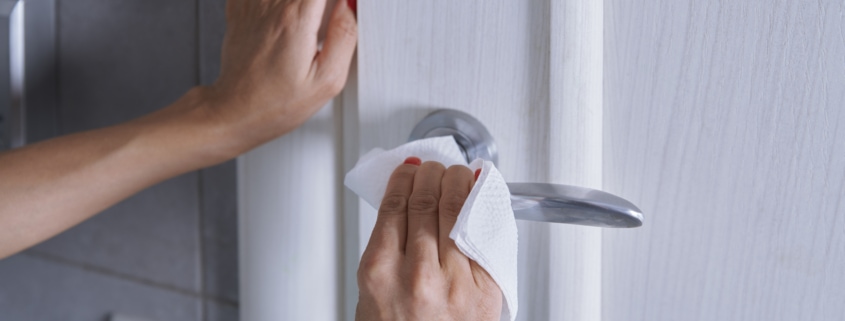


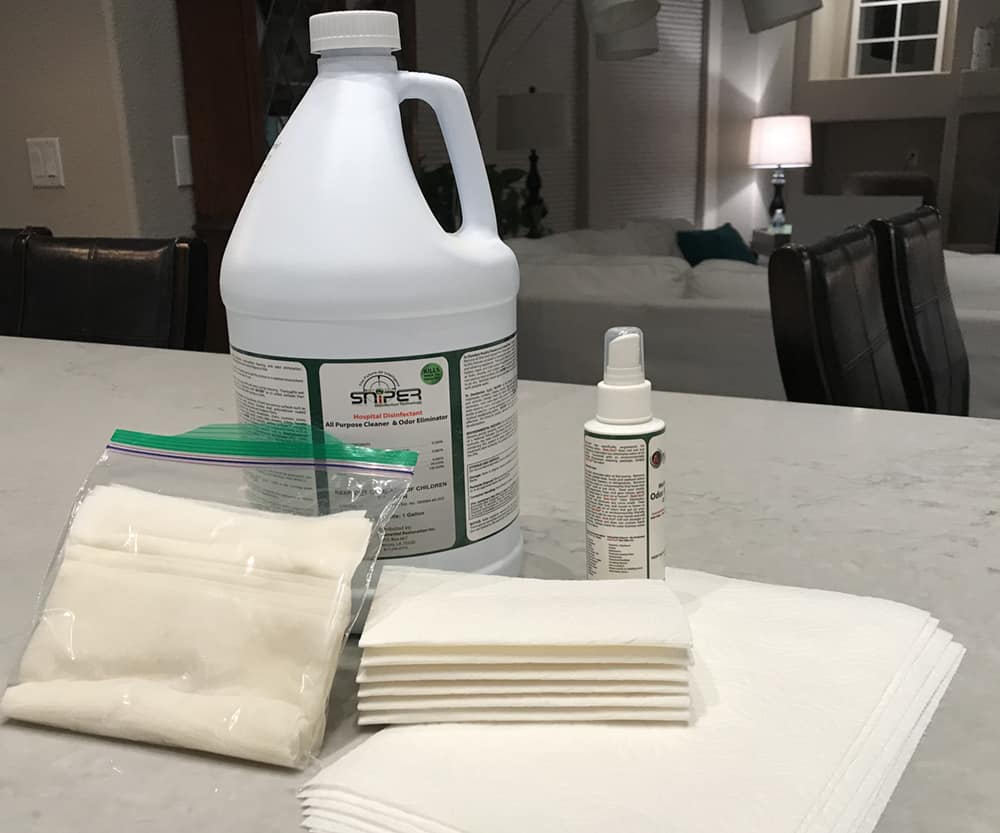


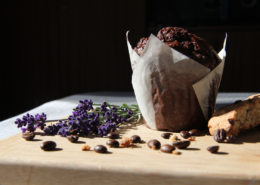


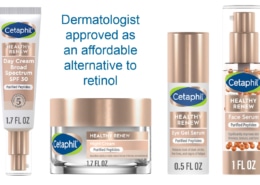
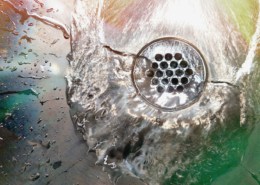

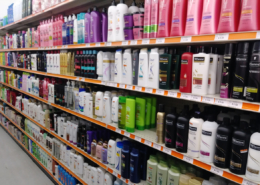
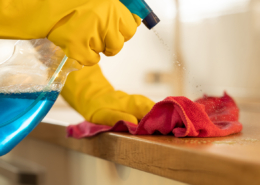


For those of us who do not have Sniper, and are using rubbing alcohol, is it the same formula? 50/50? Or do we just pour it on the paper towels? I feel like this article turned into an advertisement for Sniper more than a recipe for disinfectant wipes
It looks like full strength for alcohol. It looks like you should only dilute the product if everyone in your home is at low risk. It also looks like you can dilute it in any amount between 50-99 percent of the product.
Hi Mary, I was fortunate to get one bottle of Sniper right before Ted sold out. I immediately took a snack sized zip back, folded “select-a-size” paper towels in fourths, put them in the bag and added Sniper. When I have ventured out of my house, I take a wipe out of the bag before I even open my car door. I grab the shopping cart with the wipe and proceed to wipe ever area I would ever touch. I grab door handles with the wipes and if at all unsure I even wipe down my purchases.
I’ve used NokOut for years thanks to your articles (and still amaze people that I have 4 cats because my house never smells.) I also work from home, so now adding Sniper to the mix assures me that my clients and I will have a clean environment. Thanks for this great article!
I have a Health Canada approved product with a Drug Identification Number that will disinfect to 99.9% accuracy utensils; glassware; mugs; tops of pop/energy drink cans; aluminum food cans; remotes; hard toys and any other hard surface in your home, car or office. However we have had issues in getting financing to have a new quantity done. Anyone who reads this story and wants to help us get this done please email me: sherri.walsh2018@gmail.com
Someone asked about using Nok Out in place of Sniper since it is out of stock. Can that be done? What is the difference between the two? What makes Sniper kill the viruses and apparently Nok Out does not?
I found these articles from Mary in 2014, so it sounds like the ingredients are the same:
[Links removed as outdated and no longer relevant.]
The articles from 2014 are no longer current. In 2015 due to a change in ownership of the company and the introduction of SNiPER, formulation of Nok-Out was changed. What I can tell you is that SNiPER Hospital Disinfectant has been Registered with and Certified by the EPA to kill COVID-19, SARS, MERSA and other specific viruses.
Can Nok-Out be used as a disinfectant until Sniper is back in stock?
I can’t say 100% yes. I can tell you that Nok-Out is a slightly weaker formulation of SNiPER, which has been approved by the EPA.
Thanks for this timely article. You’re a miracle worker!
I have used Nokout and/or Sniper for years. I am so glad that I ordered a gallon as soon as they sent an email saying it worked on COVID-19. I put it in my fogger and did the entire house over the weekend. This is a great product!
I’m so glad you let us know about Sniper a few months ago! After communicating with the owner of Nok-Out with some questions, I ordered a few of the small spritz bottles that were on a special sale. I shared some with my parents, and I’m grateful I have them. Thank you!
Is there any dilution for Snyper? Just pour onto folded paper towels in a Ziplock bag? I always have it on hand.
Great question. I inquired with Ted Price, owner and this is his response:
For most people, a 50/50 mix will be sufficient for most situations and needs. Spray – and walk away. Allow it to air dry. It may be a good idea to distinguish between people who are healthy and really don’t have much to worry about, and older people whose health is compromised. For the very young and the elderly, perhaps erring towards the ‘disinfected’ stage is warranted. For everybody else, most likely a 50% mix is sufficient. Where you are dealing with something really nasty, like canine parvo, mold, MERSA CDiff and so on—always go full strength.
Thanks, Mary. Your reply appeared after I posted mine…..
So just to make clear, for everyday use as a disinfectant i can put it in a spray bottle and mix with water at a 50/50 ratio? Spray and walk away? No need to wipe it down? Let it air dry on all surfaces? Thanks!
SNiPER, yes that is what I have learned from Ted Price.
That’s exactly what I would like to know too. Can SNiPER be diluted or must it be used full strength?
See above. I am adding Ted’s response to the post. Thanks!
Sniper has been out of stock online as well as at Amazon for the past week. Hoping they will restock as it’s such a great product!
Yes. I am in close touch with Ted Price regarding restocking. We’ll be the first to know! Stick close.
I spoke with Ted and he says 5 pallets of SNiPER ar on their way to him. Expecting delivery in a “few” days.